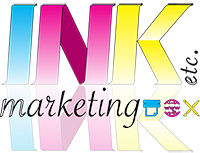Unlock the secret to superior marketing results with our eye-opening comparison:
Print vs. Digital – the ultimate showdown revealed!

Table of Contents
- Understanding Print Marketing
- Decoding Digital Marketing
- Analyzing Business Goals and Target Audience
- Considering Budget and Resources
- Monitoring and Measuring Success
- Integrating Print and Digital Marketing
- Making a Decision
Do you find yourself torn between the traditional print marketing and the increasingly popular digital marketing? You’re not alone. As a business owner, it’s crucial to choose the right marketing strategy that will not only get your business noticed but also keep your sales funnel overflowing. In this comprehensive guide, we will explore the pros and cons of both print and digital marketing. By the end, you’ll have a clearer understanding of which direction to take for your business.
Understanding Print Marketing
Print marketing has been a tried and true method for promoting businesses for many years. It involves using physical materials like brochures, flyers, newspaper advertisements, and billboards to reach your target audience. The tangibility of print marketing materials offers a unique experience for customers.
However, print marketing does have its drawbacks. It can be costly, especially when creating and printing high-quality materials. Tracking the effectiveness of print marketing can also be challenging. Nevertheless, if your business targets a specific local community or an older demographic, print marketing may still be a viable option.
When creating your print marketing materials, focus on design and compelling content. Make sure your message is clear and easily digestible, and ensure that your contact information and call-to-action are prominently displayed.
Decoding Digital Marketing
Digital marketing, on the other hand, leverages the power of the internet and various online channels to promote your business. It encompasses social media marketing, email marketing, search engine marketing, content marketing, and more. The main advantage of digital marketing is its ability to reach a larger and more diverse audience, while also providing measurable insights into its effectiveness.
However, digital marketing can be overwhelming for beginners, especially when dealing with multiple platforms and algorithms. It requires a solid understanding of online marketing techniques and tools. Furthermore, digital marketing requires continuous adaptation as trends and algorithms change frequently.
When embarking on your digital marketing journey, focus on identifying your target audience and selecting the most suitable platforms accordingly. Invest time and effort in creating engaging content that resonates with your audience. Use analytics tools to measure the success of your campaigns and make data-driven decisions.
Analyzing Business Goals and Target Audience
In order to choose the right marketing strategy, you need to understand your business goals and target audience. Different businesses have different objectives, and the target audience plays a crucial role in deciding which marketing approach will yield desired results.
Consider your business goals and determine if they align more with the local community or a broader audience. If your business primarily serves a small geographic area or targets a specific niche, print marketing could be more aligned with your goals. However, if you aim to reach a wider audience or cater to a tech-savvy demographic, digital marketing might be your best bet.
Considering Budget and Resources
When choosing between print marketing and digital marketing, it’s essential to consider your available budget and resources. Print marketing often involves printing costs, graphic design fees, and distribution expenses. On the other hand, digital marketing may require investments in online advertising, content creation, and software tools.
Assess your budget and resources carefully. Determine which marketing approach provides the best return on investment for your business in terms of reach, conversion, and long-term growth. Remember that digital marketing allows for more flexibility when it comes to budget allocation and optimization.
Monitoring and Measuring Success
To make informed decisions about your marketing strategy, it’s crucial to monitor and measure success. Both print marketing and digital marketing can benefit from tracking key performance indicators (KPIs).

For print marketing, you can track the number of inquiries generated from specific print materials or track coupon redemptions. Use unique URLs or phone numbers to differentiate responses from different campaigns. Engage with customers directly and ask how they found out about your business to gain insights.
Digital marketing offers more sophisticated tracking options. Utilize marketing analytics tools to measure website traffic, click-through rates, conversion rates, and engagement levels. Monitor social media metrics, email open rates, and online sales to evaluate the effectiveness of your digital campaigns.
Integrating Print and Digital Marketing
Who says you have to choose between print marketing and digital marketing? In many cases, an integrated approach can yield the best results. By combining the strengths of both strategies, you can reach a broader audience and reinforce your brand across multiple channels.
Consider using print materials to drive traffic to your website or promote social media engagement. Include QR codes on your print materials to provide an easy transition between print and digital platforms. Use digital marketing to create buzz around your print campaigns or offer exclusive online promotions. This integrated approach can help you maximize the impact of your marketing efforts.
Making a Decision
Now that you have examined the different aspects of print marketing and digital marketing, it’s time to make a decision tailored to your business goals, target audience, budget, and available resources. Use the following checklist to guide your decision-making process:
- Define your business goals and objectives
- Identify your target audience
- Evaluate the pros and cons of both print and digital marketing
- Analyze your budget and available resources
- Consider the monitoring and measurement capabilities of each strategy
- Explore opportunities for integrating both approaches
Remember, the marketing landscape is constantly evolving, so it’s essential to regularly evaluate and adapt your strategy based on your business’s needs and the preferences of your target audience.
By carefully considering these factors, you can make an informed decision that will help you get your business noticed and keep your sales funnel overflowing, leading to long-term success.
Are you ready to take your business to the next level? Choose the right marketing strategy and let your creativity shine!
